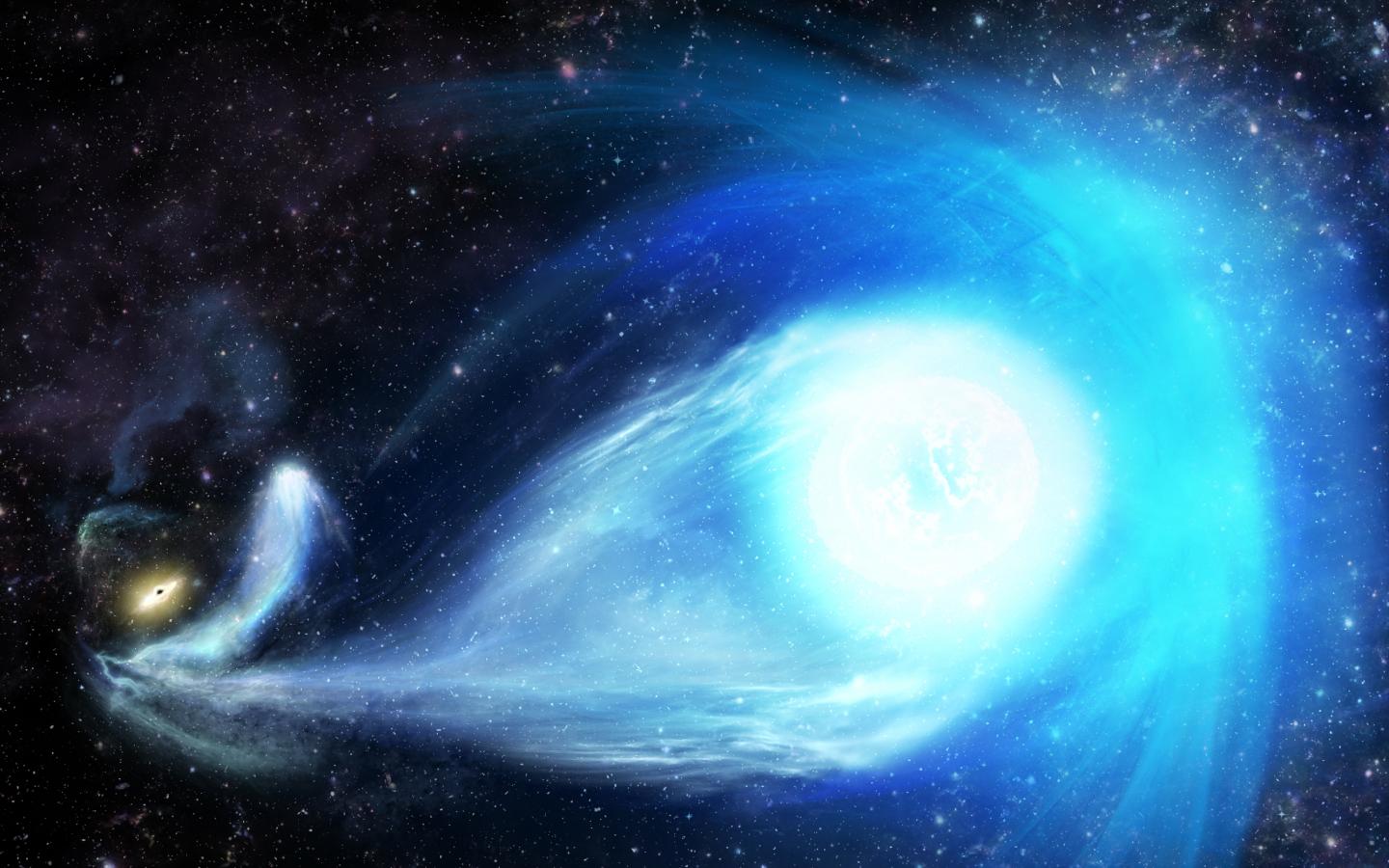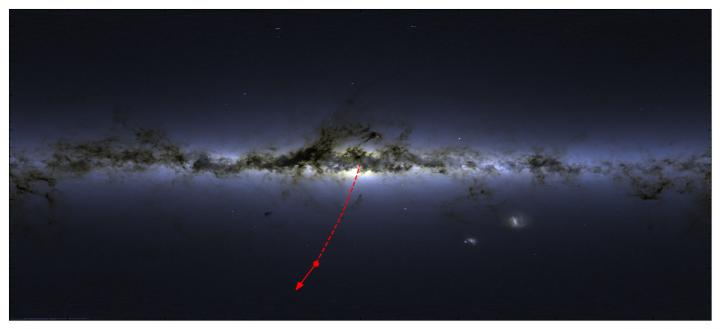Star Ejected from Milky Way's 'Heart of Darkness' Reaches Mind-Blowing Speed
"It is a visitor from a strange land."
As humankind's ancestors were learning to walk upright, a star was launched out of the supermassive black hole at the center of our galaxy at a staggering 3.7 million mph (6 million km/h).
Five million years after this dramatic ejection, a group of researchers, led by Sergey Koposov of Carnegie Mellon University's McWilliams Center for Cosmology, has spotted the star, known as S5-HVS1, in the Crane-shaped constellation Grus. The star was spotted traveling relatively close to Earth (29,000 light-years away) at unprecedented, searing speeds — about 10 times faster than most stars in our galaxy.
"The velocity of the discovered star is so high that it will inevitably leave the galaxy and never return," Douglas Boubert, a researcher at the University of Oxford and a co-author on the study, said in a statement.
Video: How the Milky Way's Black Hole Ejected Runaway Star
Related: Top 10 Star Mysteries of All Time

Need more space?
Our sister publication All About Space magazine takes you on an awe-inspiring journey through our Solar System and beyond, from the amazing technology and spacecraft that enables humanity to venture into orbit, to the complexities of space science.
Save up to 61% on 13 issues for the year!
"This is super exciting, as we have long suspected that black holes can eject stars with very high velocities. However, we never had an unambiguous association of such a fast star with the galactic center," Koposov said in the statement.
The star was discovered with observations from the Anglo-Australian Telescope (AAT), a 12.8-foot (3.9-meter) telescope, and the European Space Agency's Gaia satellite. The discovery was made as part of the Southern Stellar Stream Spectroscopic Survey (S5), a collaboration of astronomers from Chile, the U.S., the U.K. and Australia.
Now that the star has been spotted, researchers could track the star back to Sagittarius A*, the black hole at the center of the Milky Way. It also serves as an incredible example of the Hills Mechanism, proposed by astronomer Jack Hills 30 years ago, in which stars are ejected from the centers of galaxies at high speeds after an interaction between a binary-star system and the black hole at the center of the galaxy.
Get the world’s most fascinating discoveries delivered straight to your inbox.

"This is the first clear demonstration of the Hills Mechanism in action," Ting Li, a fellow at the Carnegie Observatories and Princeton University who led the S5 collaboration, said in the statement. "Seeing this star is really amazing as we know it must have formed in the galactic center, a place very different to our local environment. It is a visitor from a strange land."
"While the main science goal of S5 is to probe the stellar streams — disrupting dwarf galaxies and globular clusters — we dedicated spare resources of the instrument to searching for interesting targets in the Milky Way, and voila, we found something amazing for 'free.' With our future observations, hopefully we will find even more!" Kyler Kuehn, deputy director of technology at the Lowell Observatory who is part of the S5 executive committee, added in the statement.
This discovery was published in a study on Nov. 4 in the journal the Monthly Notices of the Royal Astronomical Society.
- Hungry Black Hole 'Eats' About 3 Times a Day
- Are Supermassive Black Holes Going to Eat the Universe?
- NASA's Chandra Space Telescope Captures the Tempest in a Cosmic 'Teacup'
Follow Chelsea Gohd on Twitter @chelsea_gohd. Follow us on Twitter @Spacedotcom and on Facebook.

Chelsea Gohd joined Space.com as an intern in the summer of 2018 and returned as a Staff Writer in 2019. After receiving a B.S. in Public Health, she worked as a science communicator at the American Museum of Natural History. Chelsea has written for publications including Scientific American, Discover Magazine Blog, Astronomy Magazine, Live Science, All That is Interesting, AMNH Microbe Mondays blog, The Daily Targum and Roaring Earth. When not writing, reading or following the latest space and science discoveries, Chelsea is writing music, singing, playing guitar and performing with her band Foxanne (@foxannemusic). You can follow her on Twitter @chelsea_gohd.



